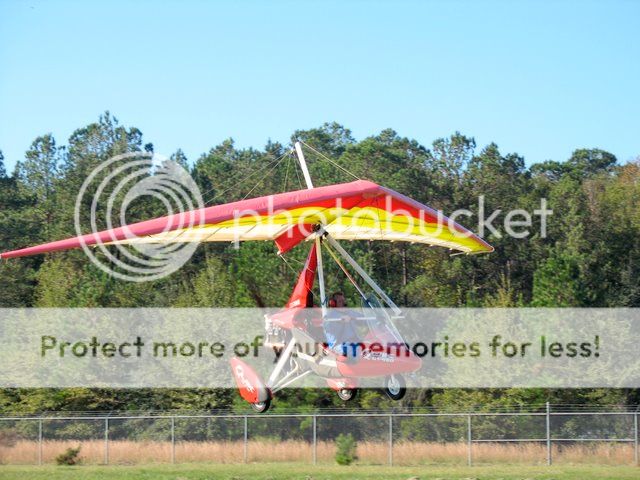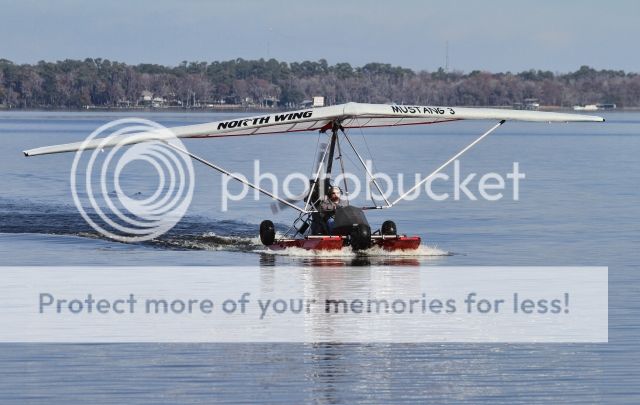But the Hawk accident had nothing to do with the piloting or training. Locking collar slipped on the torque tube resulting in the loss of elevator control. I remember that case quite well, because Hawk is generally well-regarded as safe. I did not realize the identity of the pilot though.
http://aviation-safety.net/wikibase/wiki.php?id=44449
Loss of pitch control kills in any airplane, not just an ultralight. I remmeber how an Alaska Airlines MD-80 killed everyone onboard because jackscrew nut stripped. Exactly the same accident, and tells us nothing about the safety of ultralights.
BTW, CGS Hawk is quite nice and I thought about buying it as S-LSA, but it never happened, what with Danny trying to sell the company. It's pretty much an equivalent of Kolb: too heavy to really fit into the strict limits of ultralights.
Hmmm... I am calling BS on that report. It is not the true NTSB one, but a report generated by another party. Click on the link you provided... On the bottom of that page,
http://aviation-safety.net/wikibase/wiki.php?id=44449
there is a "edit this accident description".... I was able to change the description without even having to log onto anything


, altho I didn't change a thing in that report... I could have, and so can you right now if you click on the edit section.
Fact... I helped him pull the plane out of hangar 3 that morning and was the last one to talk to him, besides the usual tower com stuff.
Fact... Altho I didn't actually witness the crash, I was working on the building at the FBO that morning and was contacted by rescue personal within 10 minutes and was asked to go to the scene to identify the deceased and help the park service fill out the reports. In the time it took me to put my tools away the local flight instructor had driven to the site to make a positive ID. Thee instructor called me and we discussed the basics of what he saw and I really didn't want to see John in that condition so I declined to assist... Big mistake on my part.
Fact... The first call by the National Park service was to the FAA in Casper Wy, They asked what kind of plane and the ranger said" it looks like a kite with fabric wings" . The FAA said it wasn't their responsibility. So the ranger called the Teton County Sheriff and reported the crash and the fatality.. The sheriff refused to help in the inverstigation but did call the coroner out. who happened to be working a horseriders death that same morning. It took his about a hour or so to arrive on the scene..
Fact... In that hour the rangers were getting ****ed that this hunk of fabric and metal was littering their precious sagebrush so they had one of the trash dumptrucks sent to the scene, along with the fire /rescue truck that had the "jaws of life" tool.... They proceeded to chop up the wreckage into small pieces and load it into the dump truck. At about the same time the truck was leaving the scene on the way to the trash transfer station the instructor was assisting the investigating ranger in the paperwork for a death, they removed Johns wallet and the instructor once again told them it was John Walton. They still had NO idea who he was other then a dead pilot..
Fact... The truck was about 3 miles down the road when a call comes in from DC to " secure the scene and preserve all the wreckage" ... That was a big OH ***** moment for the rangers. They called the truck on the radio and had it turn around and go straight to the park HQ in Moose Wy. The coroner had just arrived and pronounced and it appeared as if John might have survived the crash, except the motor had been ripped off the mounts and crushed him from behind.

Fact... later that day the dumptruck came to the airport and offloaded the wreckage into T hangar#1, which happened to be empty. The door was padlocked and stayed that way till the NTSB investigator showed up the next day... During that detailed investigation the NTSB guy asked to see my plane so I could describe and demonstrate how a in flight IVO prop operated. I viewed the wreckage for an hour or so with him and during that time an inspection mirror was found in the tailcone, sans ANY glass, just a bare frame. I went back to work and he spent all day documenting the wreckage and supposably went back to the scene to try and find the glass mirror parts. At the end of the day we chatted briefly and he said he could not find any trace of the glass, either on the ground at the scene or anywhere in the wreckage... That was the last I saw of him, he was a younger guy, very nice, polite and what appeared to me as a thorough inspector.
Fact.... Johns maroon surburban was parked in one of the enclosed bays in a building I had just finished constructing. In the Chevy were a couple of 5 gallon gas jugs, the side windows of the plane and a few other parts for it too. During this same timeframe I was participating in a chat room RAH on the internet and was contacted by a guy names Chuck Syslinski (sp). He told me he owned Hawk CGS and I told him what I just described here..
Rumors.... I have heard the plane crashed because the mirror jammed the controls... The plane crashed because of the side windows being left off... The plane crashed because of previous damage from a earlier hard landing a few days before. And now this report of a slipped locking collar...
Personally, I think the damage caused by the jaws of life during the removal process would have destroyed any marking on the control rod, but it is possible the inspector found the smoking gun among the mess the tailcone consisted of.

..
Lessons learned... if you fly an ultralight or an experimental, don't expect a thorough investigation. At best they will try to reconstruct the accident, at worst the mess will be promptly swept up, hauled to the closest dump and lime spread on the body fluids left at the scene.. All bets are off if you are worth 23 billion and the first responders destroyed the evidence and then crafted a clever probable cause to cleanse the report... We will probably never know the REAL reason what killed John but I can assure you, he would have wanted it to be ALOT more thorough....
Godspeed John... He was a great guy..













 The only water around here is the Pacific Ocean, and it is a bit bumpy for something that small.
The only water around here is the Pacific Ocean, and it is a bit bumpy for something that small.